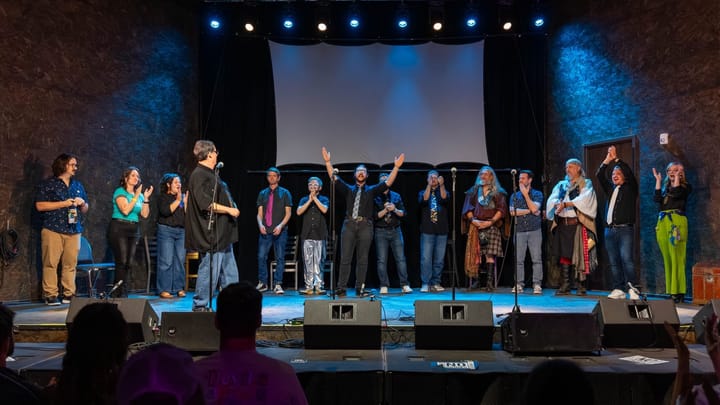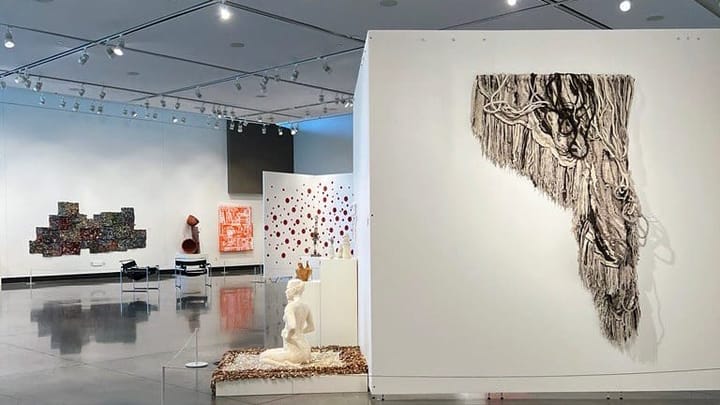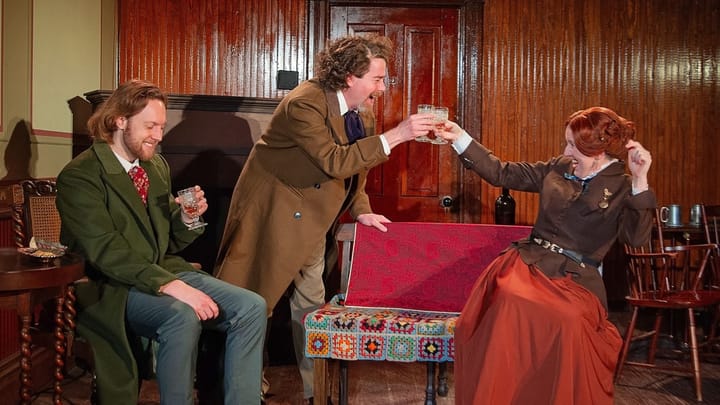The artist holds the center: Kathleen Shanahan at the Wichita Art Museum
The Wichita-based artist's work suggests "how to be in the center of complex relationships in an ever-changing world."
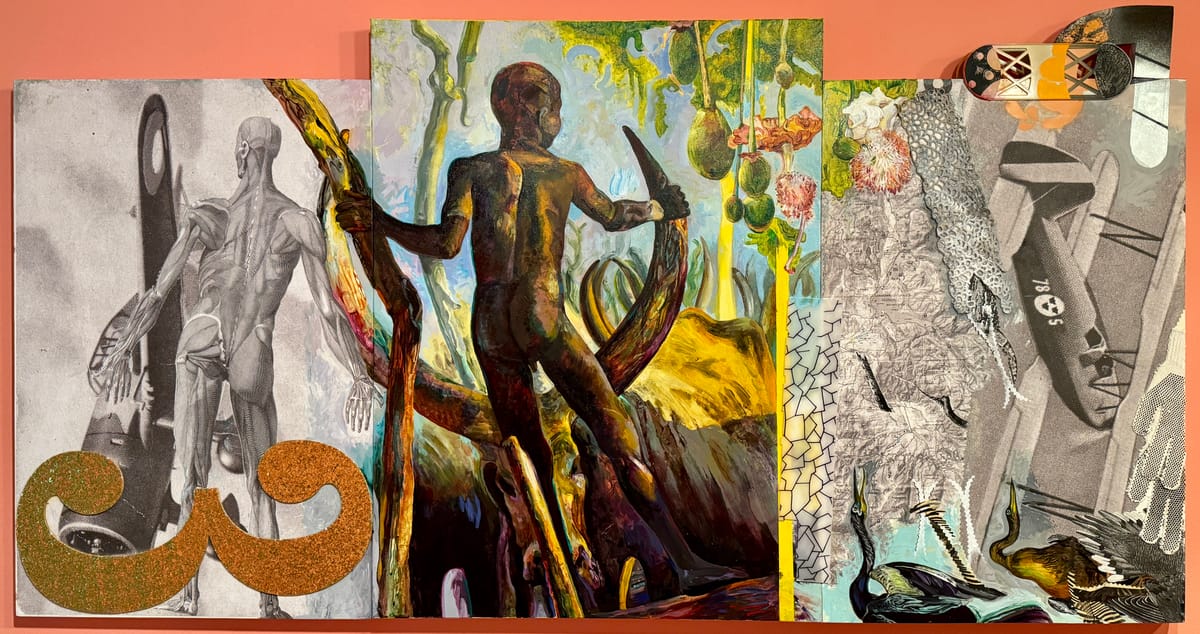
Contemporary life is information overload, with scrolls of 24/7 news and social media content, floods of texts and emails, infinite streams of music and audio books, advertisements and content creators, work and family, history, and society. Amidst this barrage of stimuli, how are we to live and hold all this together, especially when things seem to be fragmenting and falling apart?
Perhaps the work of artist Kathleen Shanahan can serve as a wise role model. Currently on view at the Wichita Art Museum’s Kurdian Gallery through a partnership with Harvester Arts, Shanahan’s solo show “Now and Then” demonstrates how to be present and experience, see, record, organize, and represent complex, multi-layered relationships.
In these intuitively created artworks, Shanahan suggests poetic narratives through her titles and the disparate combinations of imagery she employs, including fine art references, archetypes, popular culture allusions, scientific illustrations, toys, fashion, gardens, and images from many places and cultures. This contextual breadth is echoed in Shanahan’s free use of a wide variety of materials, ranging from a scrap of childhood embroidery to roofing shingles. Represented locally by Reuben Saunders Gallery and, in New York City, by Viridian Artists, this late-career artist sustains a prolific studio practice. Shanahan’s exhibition encompasses 20 artworks.
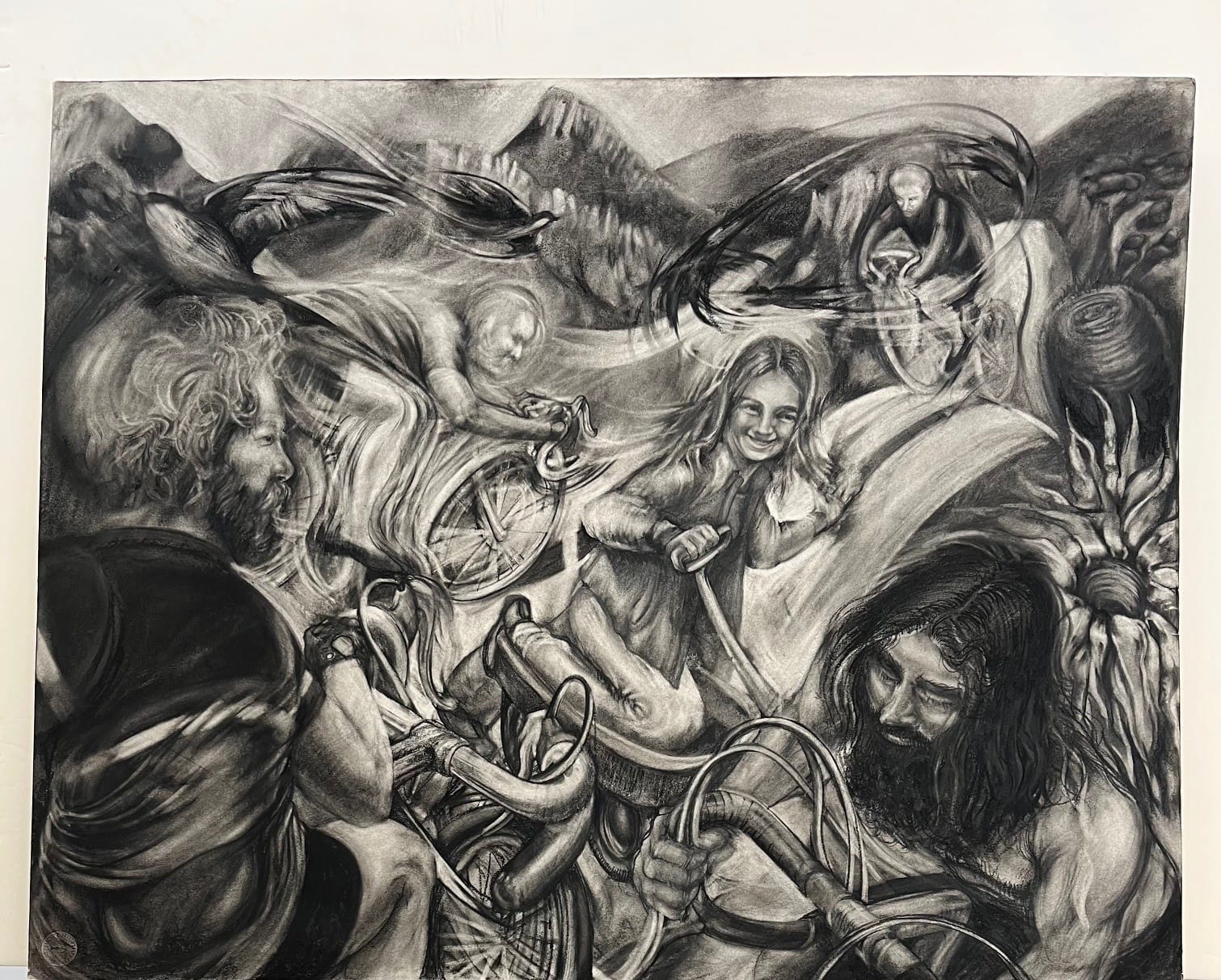
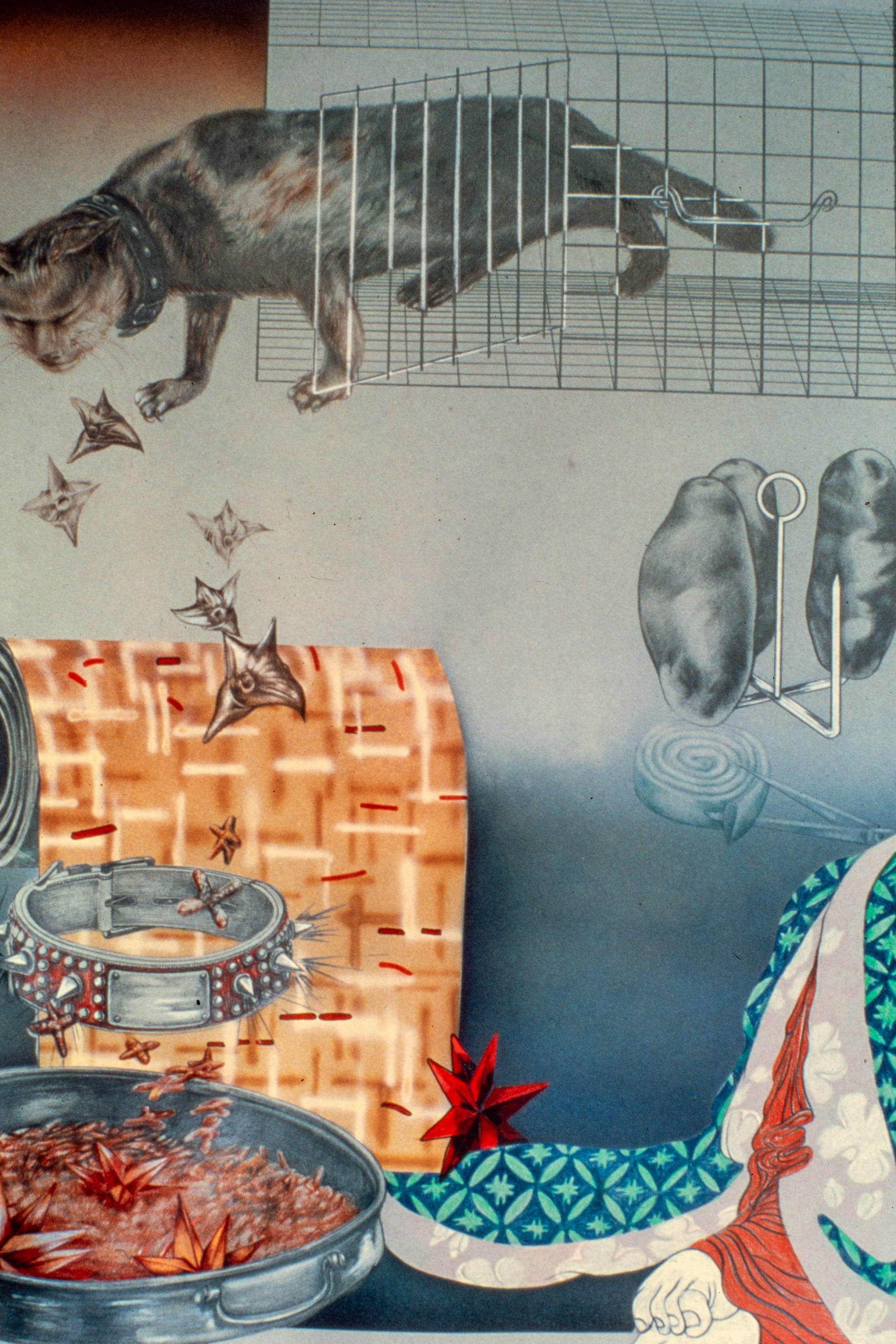
The earliest works are from the 1970s. A 1976 charcoal drawing, "Desert Dream," features a dense swirl of human figures riding bicycles and even steering a hand-pulled wagon in a hilly landscape, overlaid with swirling lines representing wind or movement. In contrast, "Caltrops and Cat Chow" from 1978 is restrained.. This work presents defined, upright objects including a cat escaping from a cage, potatoes on skewers, a spiked collar, and floating stars and flowers. Shanahan composes all of this within a negative space reminiscent of the void in a classic Asian ink painting. She created this piece prior to taking part in a visiting scholar residency at the National Museum of Ethnology in Osaka, Japan
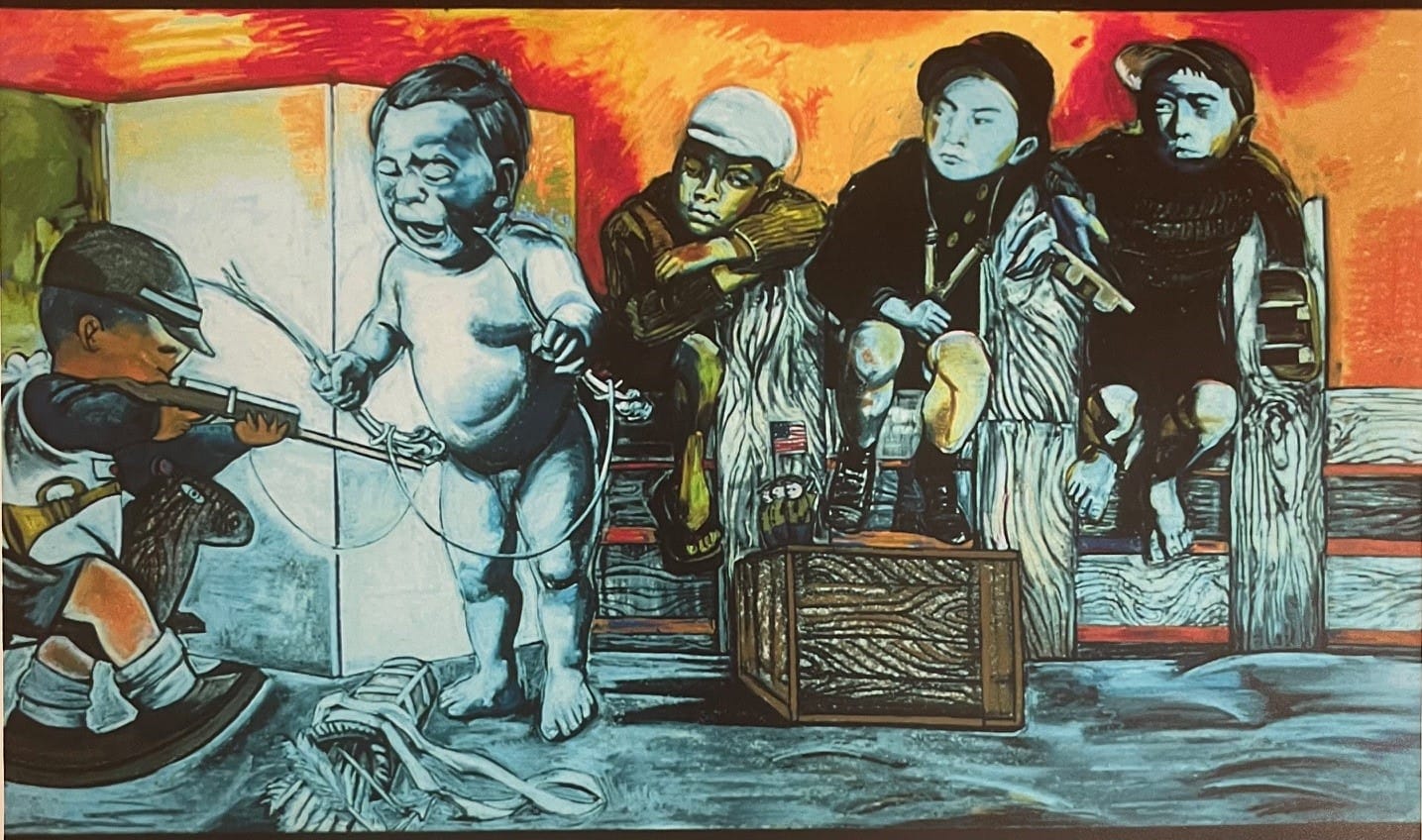
Jumping forward in time, “Boys with Toys” (1995) is a boldly drawn oil pastel that Shanahan constructs with a shallow, frieze-like band of figures that we can read from left to right. On the far left, we see a little boy who wears a military cap while riding a rocking horse and sighting through a toy rifle. Next, we encounter a sheaf of spilled arrows, modeled in a restrained, monochromatic palette, that seems to be linked with the similarly drawn distraught toddler. These little boys are carefully observed by three older boys on the right of the composition, who are literally seated on a fence, one holding a slingshot and another a pair of traditional Japanese geta shoes, with a small American flag and a collection of toy soldiers at their feet. A background of vigorously slanted marks, in red and orange, suggests a landscape entirely aflame, implying a consideration of war, perhaps even a reference to World War II.
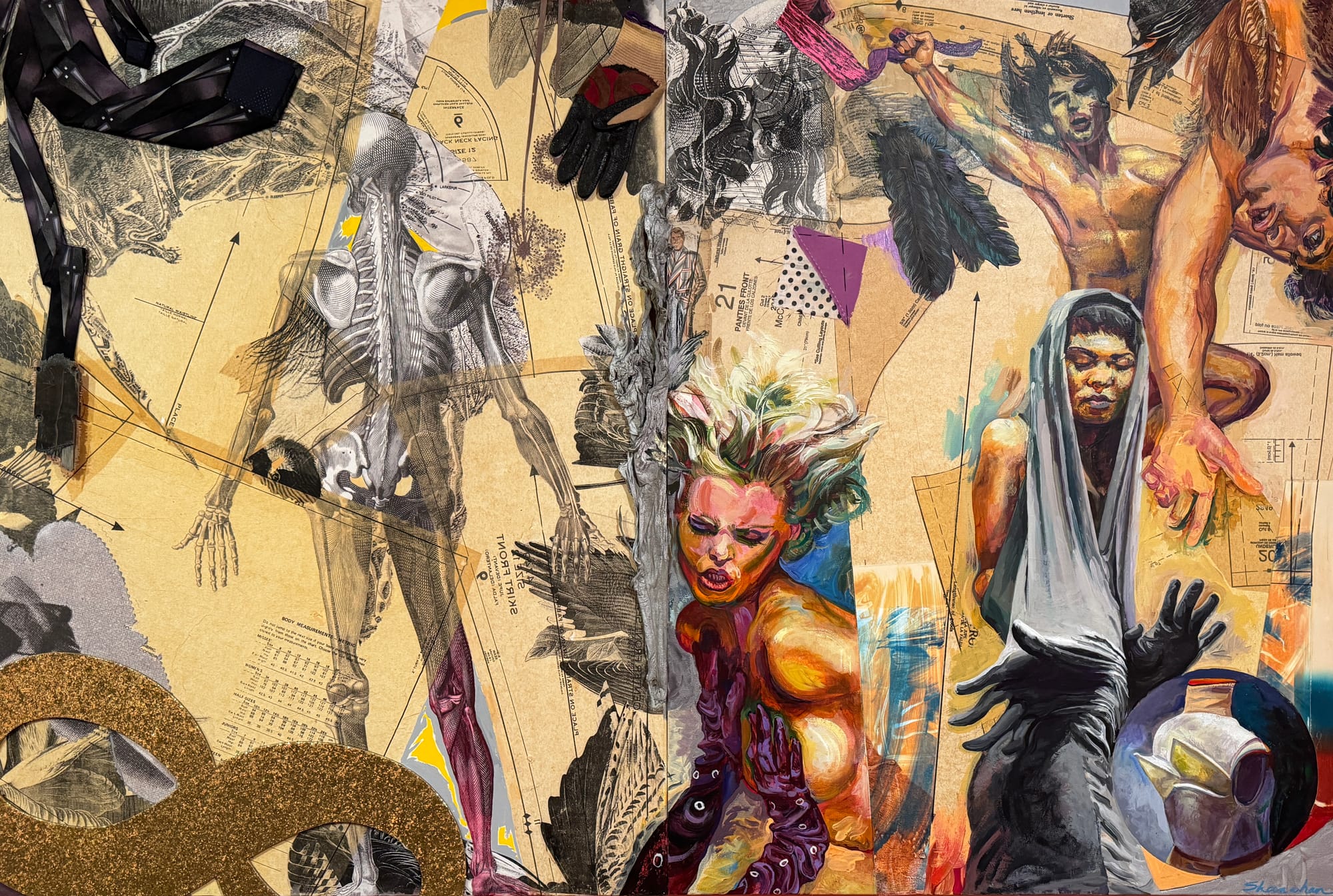
When I visited the exhibition, I was transfixed by “Icarus & Juno or Earthbound/Airborn” and was curious to understand: How could Shanahan successfully hold together so many active figures, disparate materials, and unrelated objects? While waiting for an answer, I enjoyed the artist's deft handling of paint and made an inventory of the materials and images in the work: a necktie, a glove, a painted pair of gloves, an anatomical illustration, feathers, and even more, all glued onto a background of overlapping sewing pattern pieces. A partial, gold glitter figure “8” lies horizontally in the bottom left corner — perhaps an intentional reference to the symbol for infinity?
Our free email newsletter is like having a friend who always knows what's happening
Get the scoop on Wichita’s arts & culture scene: events, news, artist opportunities, and more. Free, weekly & worth your while.
No spam. Unsubscribe anytime.
I regarded the portraits of Icarus in the work. Towards the upper right corner, a vigorous young man gestures upwards. Painted again to the right of this figure, Icarus points downwards as he falls. I see the dynamic poses, youthful musculature, expressiveness, and coloring, reminding me of paintings by the Italian Baroque master Michelangelo Merisi da Caravaggio. I recall an art history class at Wichita State, taught by Mira Merriman in the 1970s. I realize that Shanahan is using a Baroque compositional strategy.
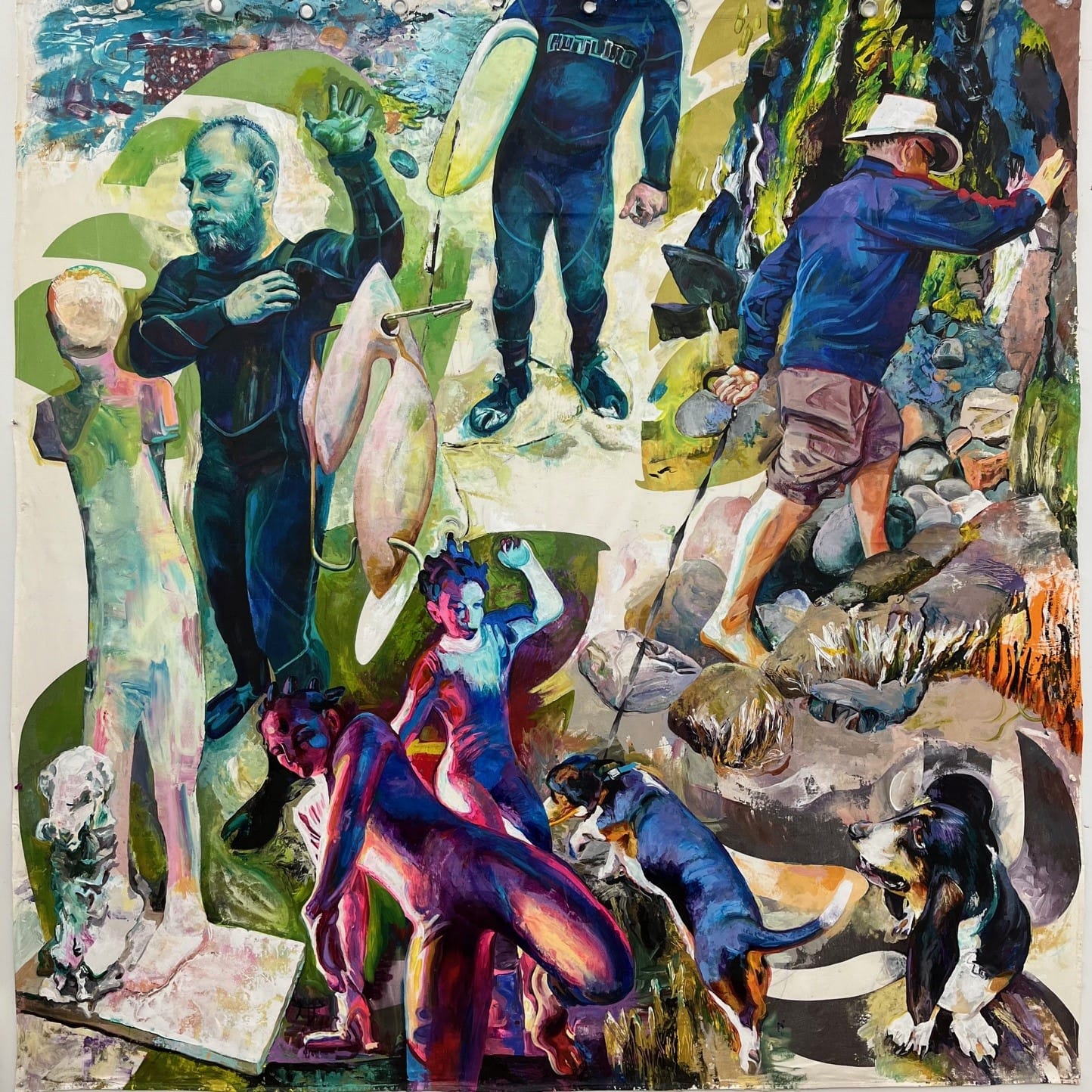
On a 7-foot-high shower curtain, Shanahan depicts her son, her husband, a beloved pet dog, and female acrobats in a work titled “Beachcombing Saltimbanques” (2024). The center is empty of actors and filled with a bit of white beach sand, in the midst of another rotating composition. It’s as though the artist is present in the middle of this implied mandorla, observing the world around her. She integrates the vortex and voids of the early drawings here, with everything held together through a feat of careful balance and interplay.
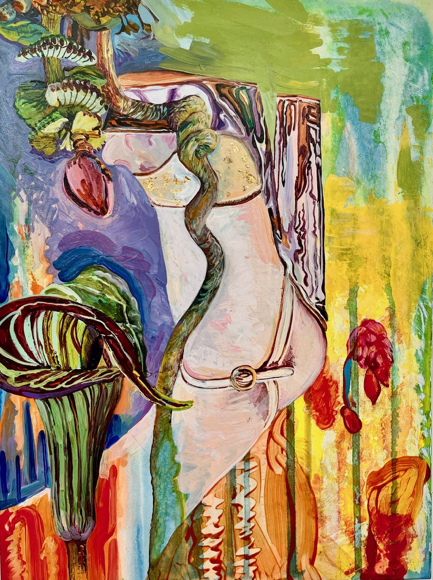
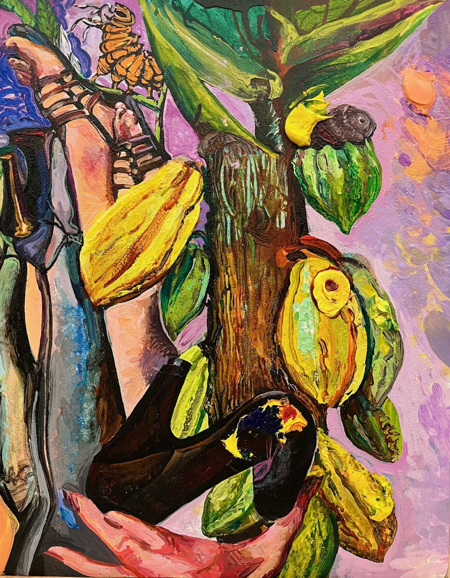
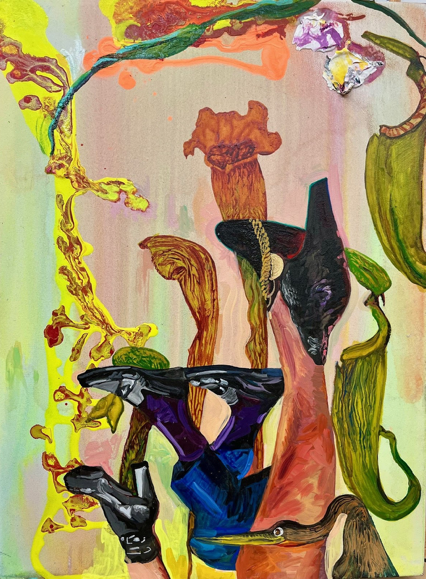
Acyrylic paintings by Kathleen Shanahan, from left: "Shoe Garden: Jack in the Pulpit," 2025, acrylic, 15.5 by 11.5 inches; "Shoe Garden: Cacao Pods," 2025, acrylic, 14 by 11 inches; "Shoe Garden: Fashion Forward," 2025, 15 by 11.5 inches. Photos by Joe Hlavacek for The SHOUT.
Shanahan paints her recent “Shoe Garden” series in a gestural technique.. Amidst the fertile flowers and luscious fruits of “Jack in the Pulpit,” “Cacao Pods,” and “Fashion Forward,” she represents adults with high heels and gleaming patent leather loafers. The legs of women are loosely entangled in foliage, merging with the sensual garden.
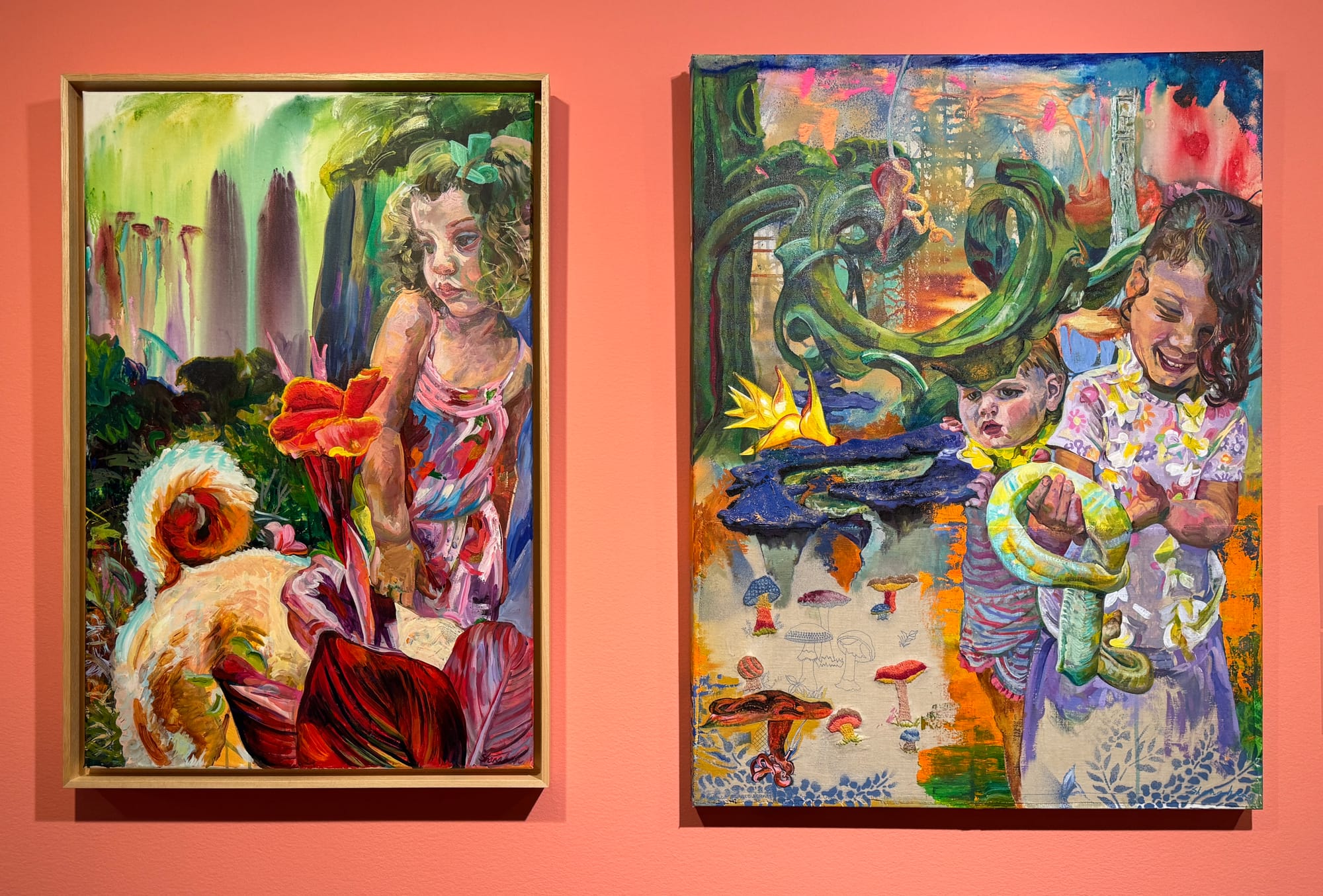
In paintings such as “Suki and Elizabeth’s Garden Encounter” and “Under the Lianas Vine,” children enjoy enchanted gardens,, where everything is magical and alive. The former includes a canna flower in the foreground, the tail and end of a dog as well as a young girl in a sundress in the middle ground, and vegetation and abstract forms in the background. And the latter features two children, with one holding a snake, various mushrooms, and a sweeping vine in front of an intricate backdrop. In both works, from the upper left corner, golden light glows — a major character in the play. The colors are jewel-like, indicating richness of experience, and both works include a distant horizon. With a few brushstrokes, “Under the Lianas Vine” suggests what might be skyscrapers backlit by sunset — or the skeletons of buildings backlit by flames. Either way, these marvelous gardens are a temporary sanctuary beyond which another world exists.
To these existential questions, “How to live? How to hold the center and integrate it all?”, Shanahan does not offer a single declarative answer. Instead, she models how to be in the center of complex relationships in an ever-changing world. Her exhibition offers open-ended opportunities to engage with her works, allowing questions and associations to arise, as well as the chance to construct meaning linked to the disparate experiences of our own lives.
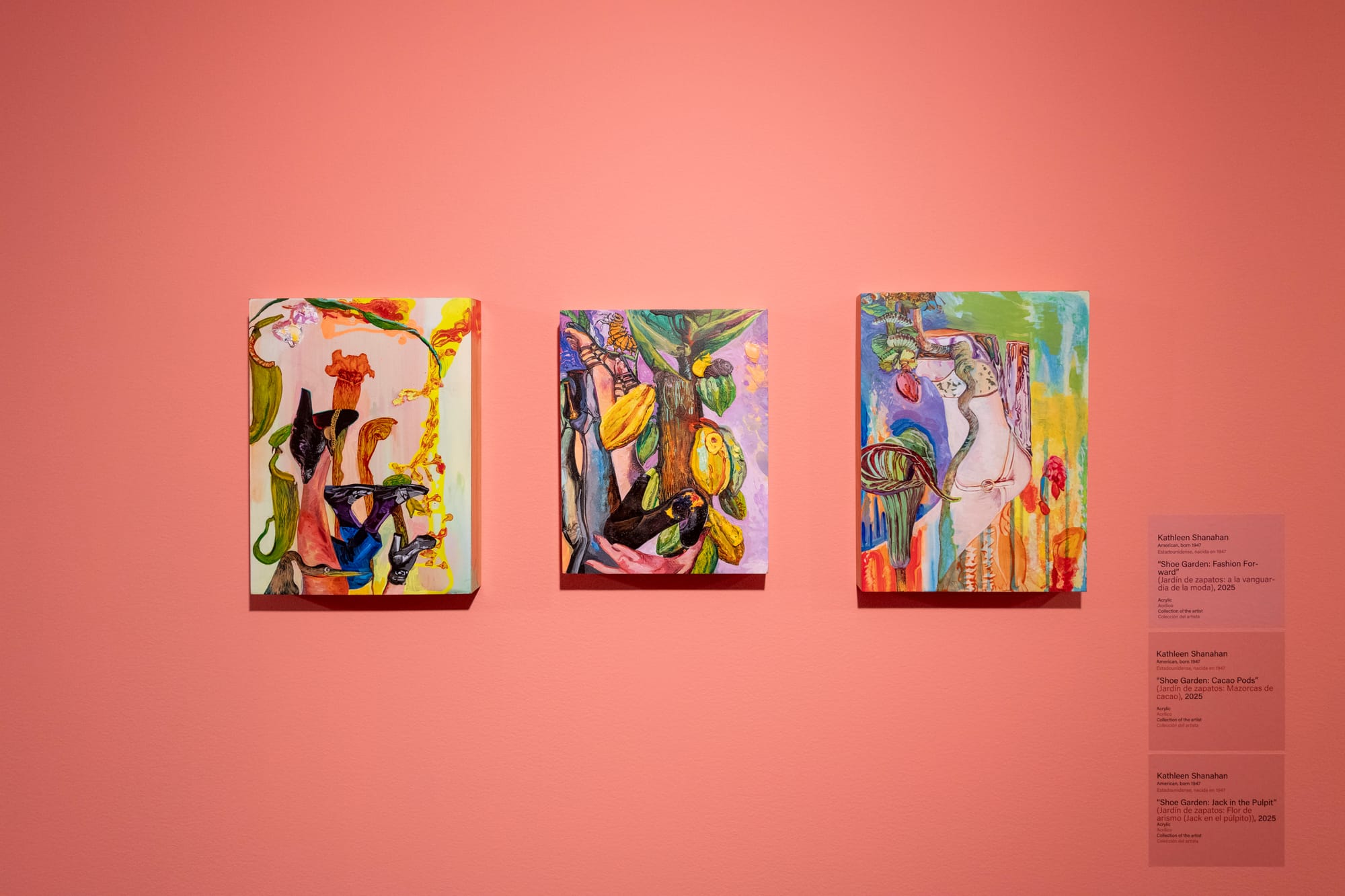
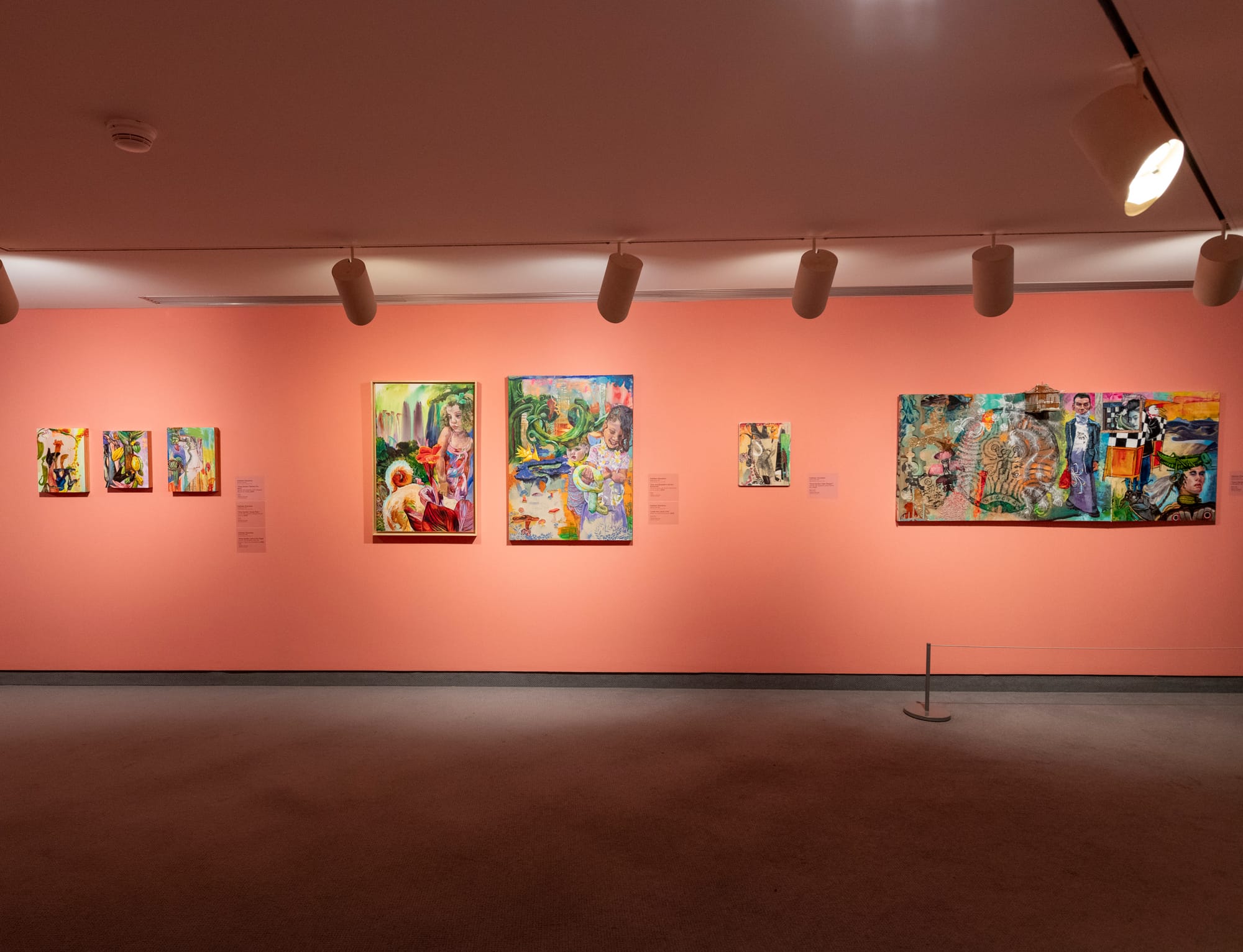
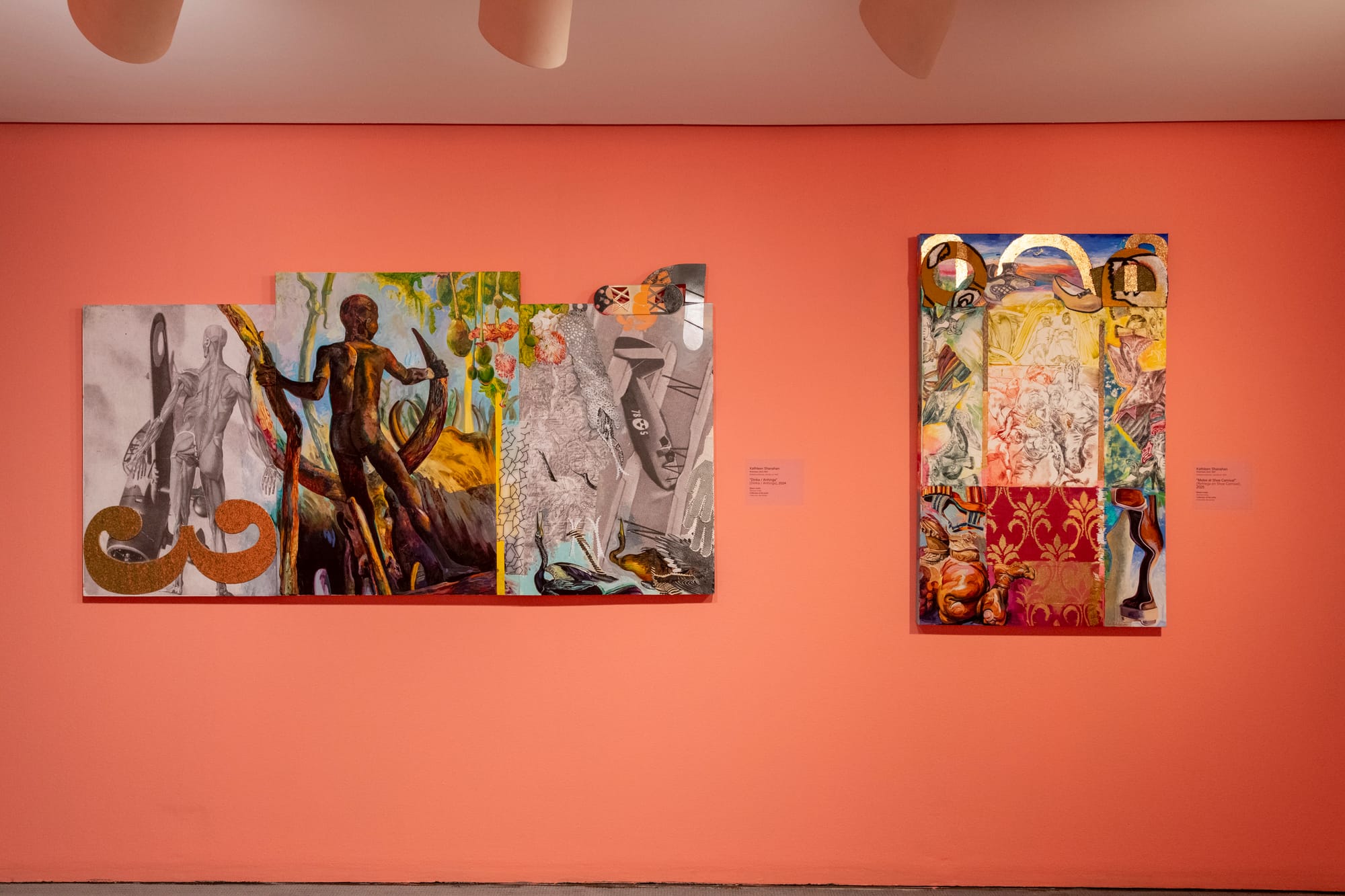
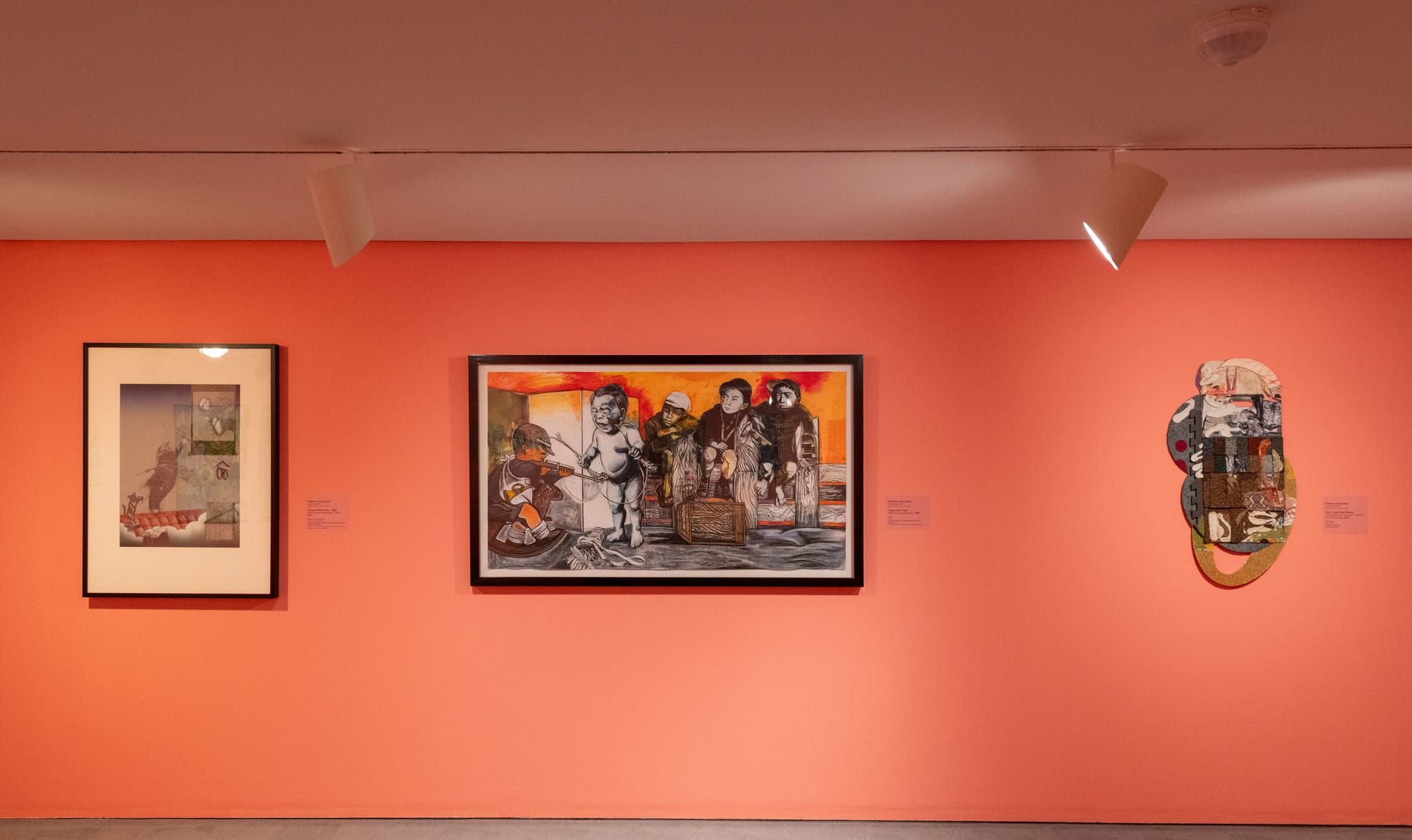
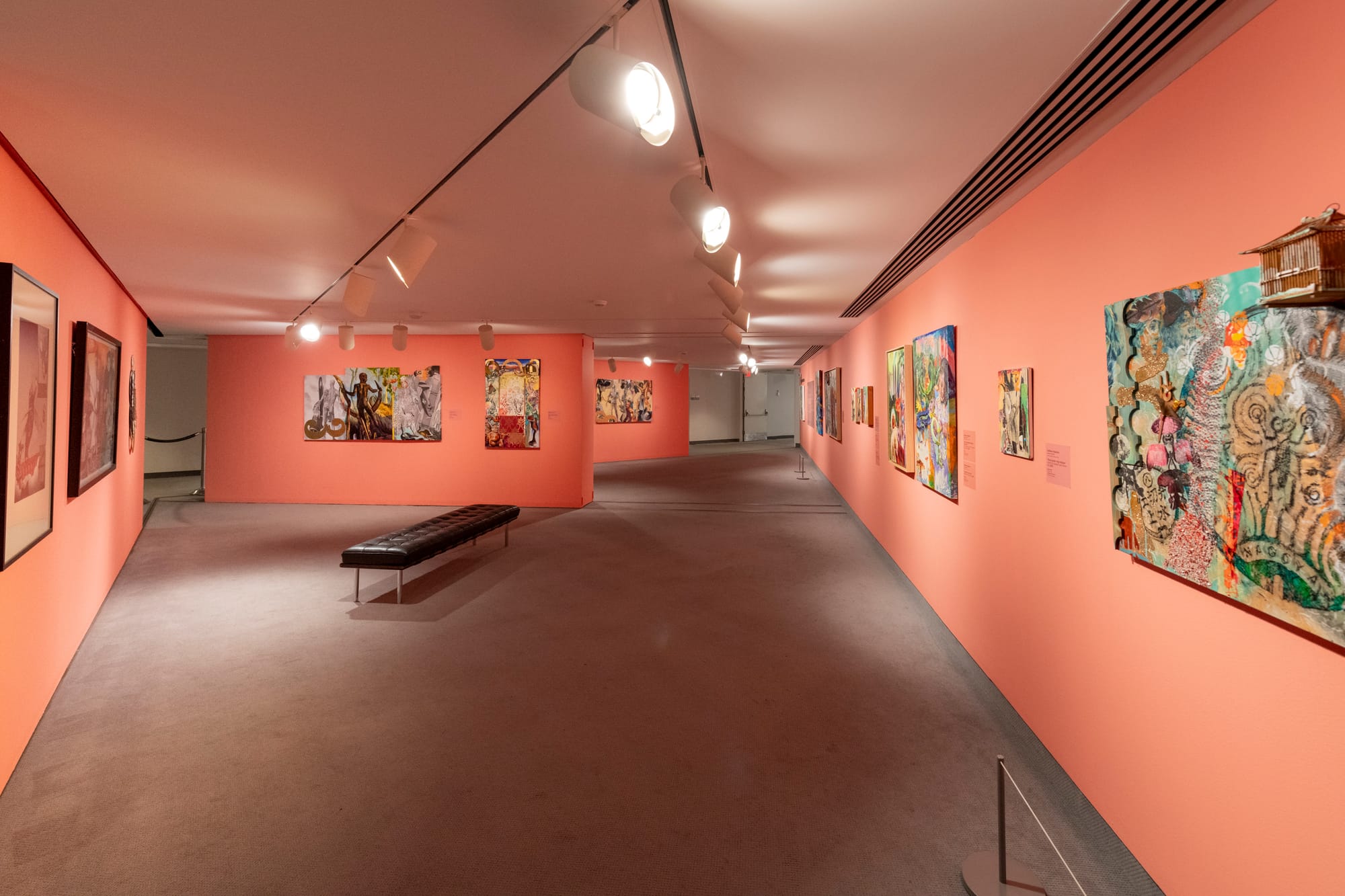
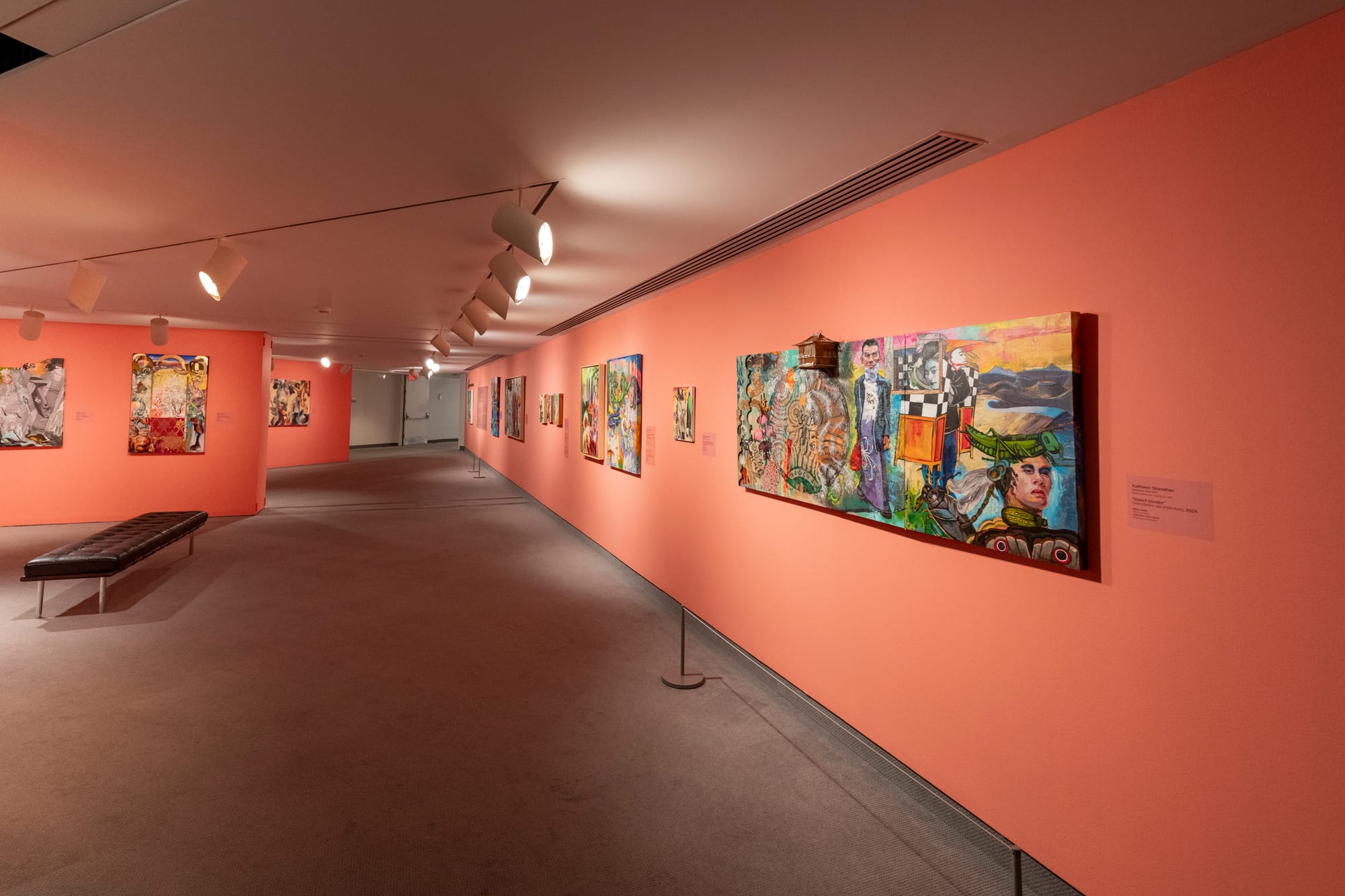
Exhibition views from “Now and Then: From the Studio of Kathleen Shanahan.” Photos courtesy of the Wichita Art Museum.

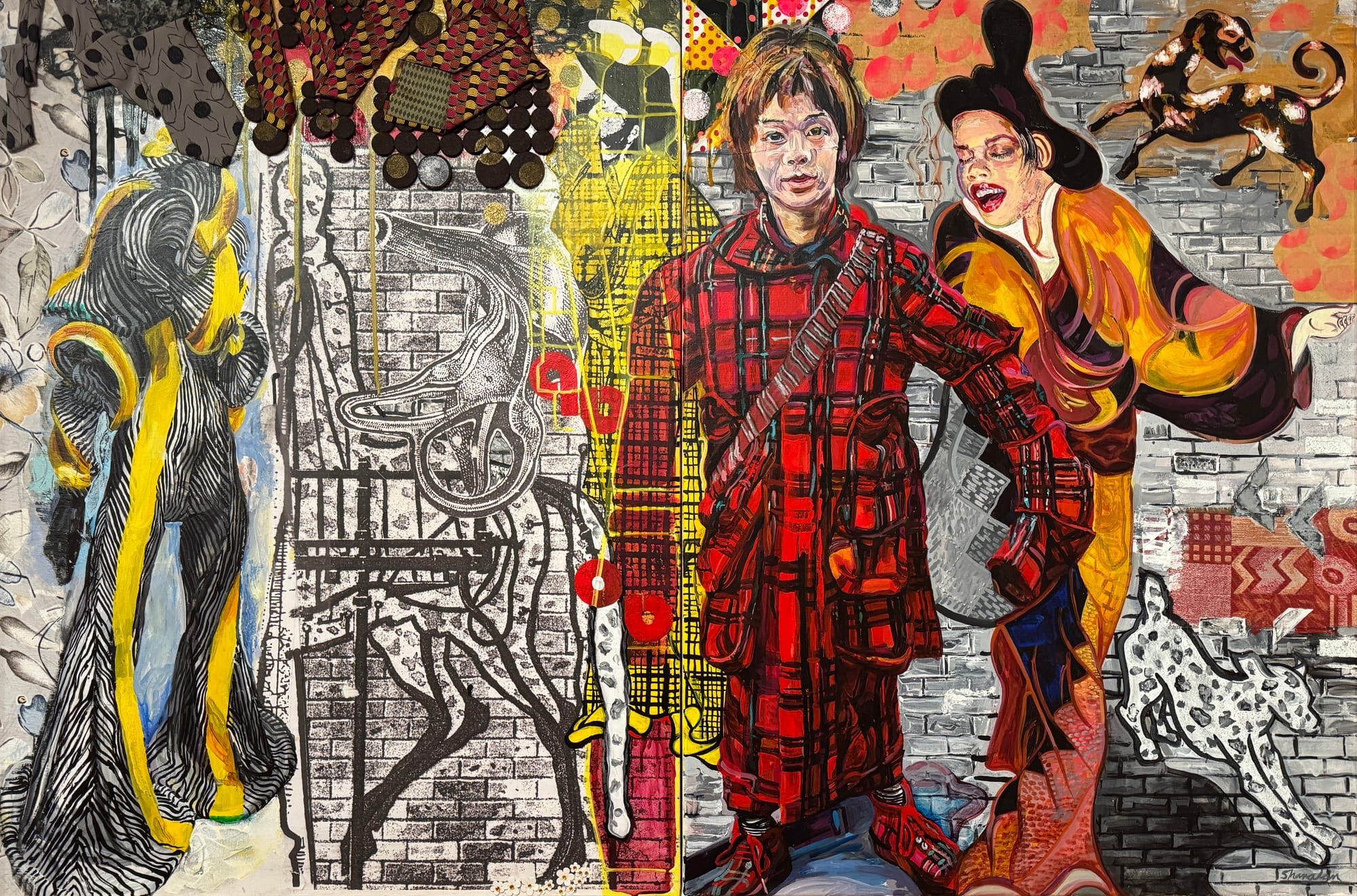
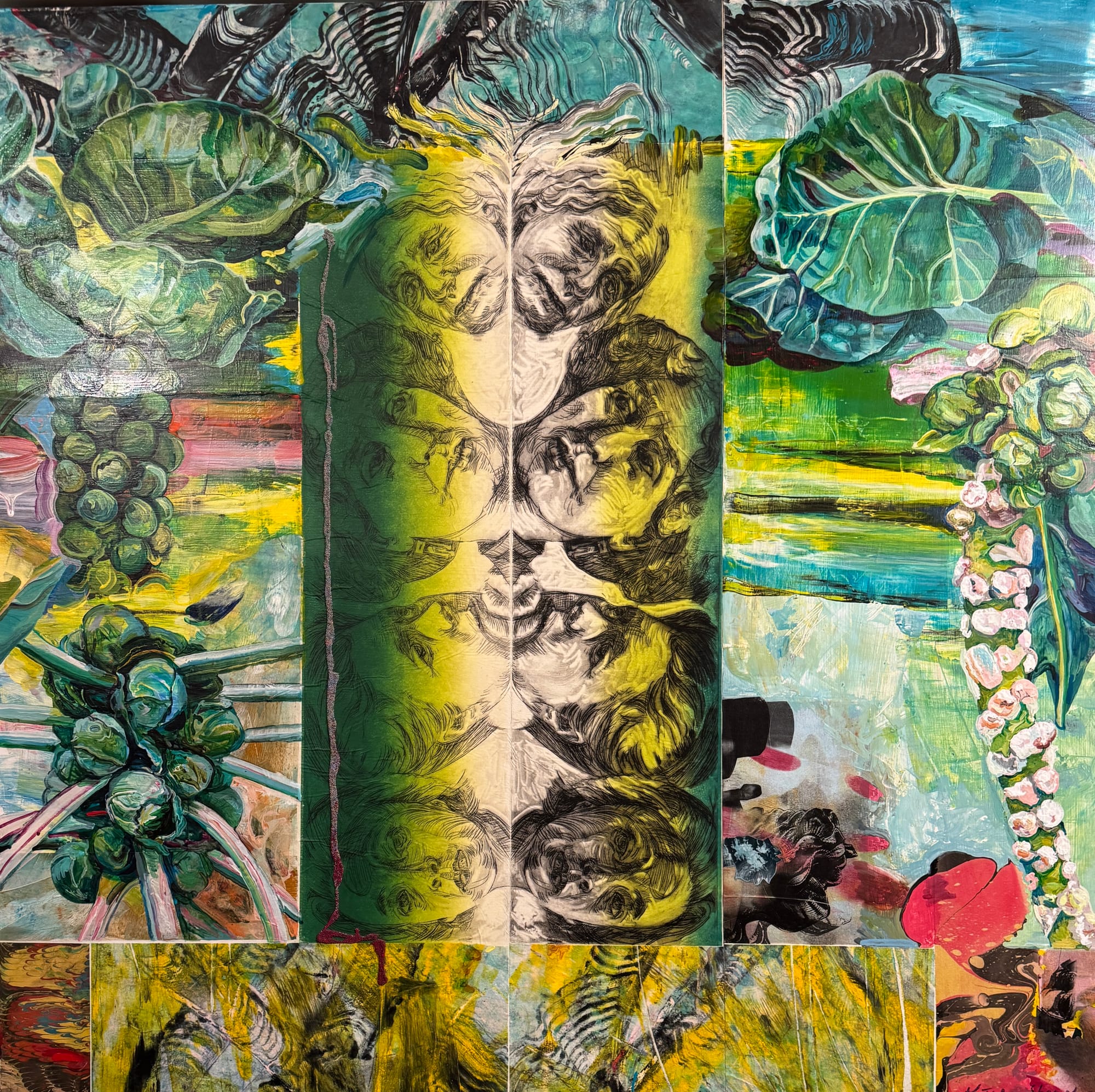
Works by Kathleen Shanahan, from left: “Dinka / Anhinga,” 41 by 78 inches, mixed media, 2024; “Spiral Conveyance and Scenic Byways,” 36 by 72 inches, mixed media, 2024; “Slender Stalk / Garden Walk,” 37.5” by 37.5 inches, dry point, acrylic, gel print and collage (with frame), 2022. Photos by Joe Hlavacek for The SHOUT.
The Details
“Now and Then: From the Studio of Kathleen Shanahan”
September 6, 2025-January 11, 2026 in the Kurdian Gallery, Wichita Art Museum, 1400 Museum Blvd. in Wichita
"Now and Then" is part of the Naftzger Family Regional Creatives exhibition series presented in partnership with Harvester Arts.
The Wichita Art Museum's hours are 10 a.m.-5 p.m. Wednesday through Sunday and 10 a.m. - 9 p.m. on Fridays. Admission is free, and the facility is accessible to people with physical disabilities.
Learn more about "Now and Then."
Denita Benyshek is an artist, initiated shaman, and researcher on contemporary artists as shamans. She is currently based in Wichita, Kansas.
❋ Derby man has the kind of voice that turns heads — and chairs
❋ Socializing while sober: how some Wichitans are cultivating alcohol-free communities
❋ As a small creative business closes, the owner mourns
❋ Painting through it: Autumn Noire on 20 years of making art
❋ How a guy from Wichita resurrected 'Dawn of the Dead'
❋ Bygone Friends University museum housed curious collections
Support Kansas arts writing
The SHOUT is a Wichita-based independent newsroom focused on artists living and working in Kansas. We're partly supported by the generosity of our readers, and every dollar we receive goes directly into the pocket of a contributing writer, editor, or photographer. Click here to support our work with a tax-deductible donation.

